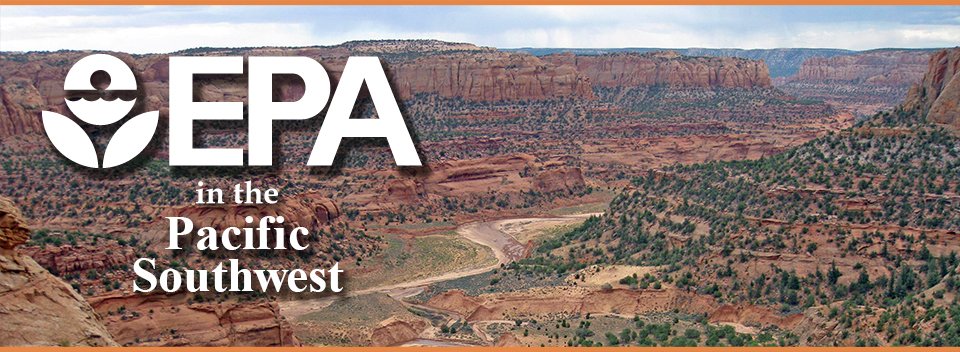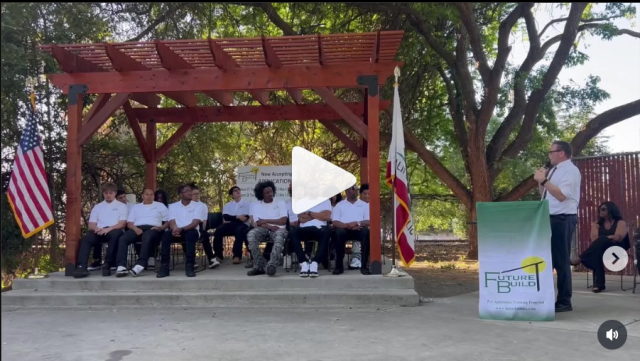April–June 2025 Newsletter

100 Environmental Accomplishments
In April, EPA released a report of environmental actions taken by the agency during the first 100 days of the new Administration. The Pacific Southwest region contributed significantly to the agency’s accomplishments, making progress in tackling a range of challenges. This included a record-breaking response to the Los Angeles wildfires: EPA paved the way toward a speedy recovery by accomplishing the first phase of the larger cleanup – the removal of hazardous material, including dangerous lithium-ion batteries – from fire-impacted houses and commercial buildings in record time. In Hawaii, EPA has continued to facilitate the safe closure of the massive Red Hill fuel facility by overseeing ongoing Navy cleanup efforts, and continued to support Maui by carrying out a long-term post-wildfire recovery support mission. In Arizona, EPA provided critical technical assistance to Maricopa County regarding air permitting for a chip manufacturing company project.
Results on the Border
In April, following Administrator Zeldin’s trip to the U.S.-Mexico Border, EPA and the U.S. International Boundary and Water Commission (USIBWC) accelerated incremental expansion of the South Bay International Wastewater Treatment Plant from 25 to 35 million gallons per day. Originally planned to take two years, this critical expansion is now on track for completion in just 100 days. This strategy will deliver immediate benefits by reducing polluted river flows and addressing odors that have been a longstanding concern for U.S. residents. The USIBWC and EPA remain fully committed to infrastructure improvements and cross-border environmental solutions. This expansion is a major milestone, and both agencies will continue working to achieve a 100% solution to the Mexican sewage issues that have plagued the San Diego area for decades.
- EPA Administrator Lee Zeldin Visits San Diego to Survey Tijuana River Sewage Crisis
- X: Regional Administrator Josh F.W. Cook
- International Boundary and Water Commission
- U.S.-Mexico Border Program
Good Jobs, Revitalized Neighborhoods
EPA’s job training initiatives, under the national Brownfields and Superfund programs, help nonprofits, local governments, and other eligible organizations build local workforces perform assessment, cleanup, or preparation of contaminated sites for reuse. These training programs enable program graduates to obtain skills to secure full-time, sustainable employment related to hazardous substances, pollutants, contaminants, and petroleum products, including jobs in cleanup, reuse, and chemical safety. Training programs prioritize unemployed and under-employed residents of communities impacted by a variety of waste facilities, blighted properties, and contaminated sites. Pacific Southwest Regional Administrator Josh F.W. Cook recently attended a Brownfields Jobs Training graduation ceremony in Pittsburg, California, while Region 9 staff took part in a Superfund Job Training graduation in the community adjacent to the Lukachukai site on Navajo Nation.
Enforcement Update
Protecting Guam’s Water
EPA settled a Clean Water Act case with South Pacific Petroleum Corporation. Under the terms of the settlement, the company will take actions to improve operations and maintenance at the petroleum storage facility. “Under the Clean Water Act, oily wastewater cannot go in island waterways. Guam’s waters must be protected," said EPA Pacific Southwest Regional Administrator Josh F.W. Cook. "This Order will stop contamination from reaching Guam’s coastal waters used for recreation and fishing. As the U.S. expands our national defense in the Pacific, Guam environmental issues will be at the top of the list.” The South Pacific Petroleum Cabras Island Terminal is a bulk petroleum storage and wholesale distribution facility that receives, stores, and distributes gasoline, diesel, and jet fuel. The facility is authorized to discharge treated oily wastewater and stormwater under a National Pollutant Discharge Elimination System permit.
- Wastewater Digest: Guam Facility to Improve Operations and Maintenance Under EPA Settlement
EPA’s Pacific Southwest (Region 9) implements and enforces federal environmental laws in Arizona, California, Hawaii, Nevada, the Pacific Islands, and 148 Tribal Nations.
Supporting Communities Addressing PFAS
Every state and territory in the Pacific Southwest region – Arizona, California, Nevada, Hawaii, American Samoa, Guam and the Commonwealth of the Northern Mariana Islands – recently received EPA funding to help small or disadvantaged communities protect drinking water from emerging contaminants, including PFAS. Learn more about the Emerging Contaminants in Small or Disadvantaged Communities grant program.
Protecting Children
Public Involvement
EPA encourages public engagement in addressing environmental issues through public notices, events and other opportunities for public participation.
Public Notices, Meetings and Events in EPA's Pacific Southwest

